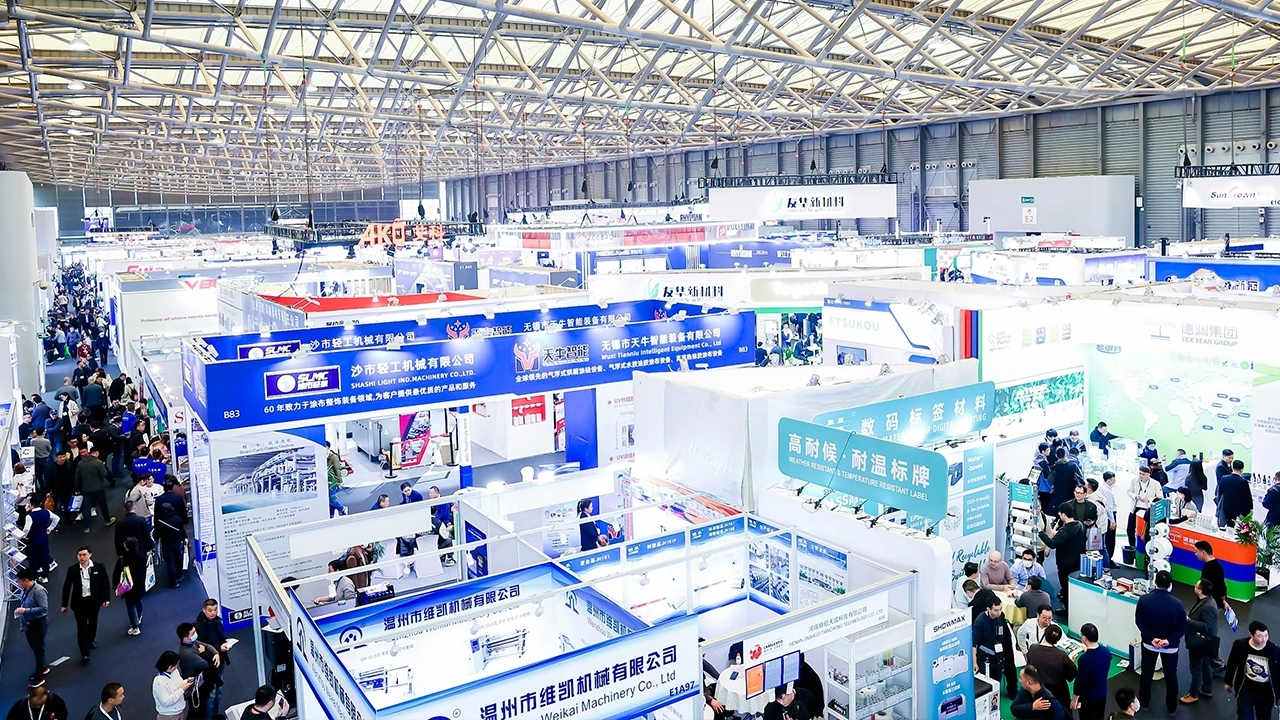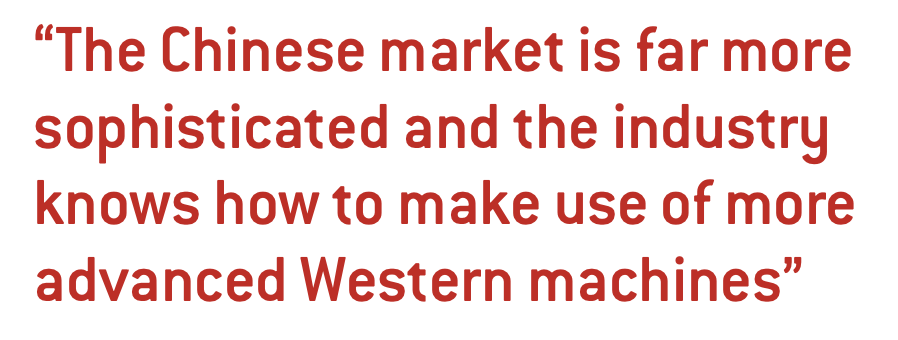China label technology goes global
Labelexpo Asia 2023 showcased a fully developed Chinese narrow and mid-web manufacturing industry with global ambitions, writes Andy Thomas-Emans.

Labelexpo Asia 2023, held in Shanghai in December, demonstrated beyond all doubt that China’s narrow and mid-web equipment, consumables and software industry has become a force to be reckoned with.
This was the show’s 20th anniversary, and it is fascinating to see how far the domestic manufacturing industry and the Chinese label converting industry has come since then.
The first show in Shanghai marked the move of Labelexpo Asia from Singapore. It quickly became clear that this would be overwhelmingly a Greater China show (which is why Tarsus later launched Labelexpos in India and ASEAN).
At the time there was no ‘labels’ industry in China. Label converters were seen as part of the general print packaging industry segment. This was something Labelexpo had to build with its then-association partner PEAIC, which mediated between the print industry and the government.
The first Labelexpo Asia show reflected this situation. Overwhelmingly, the exhibition was dominated by Japanese and Taiwanese letterpress machines, along with all the key Western press suppliers. The few Chinese suppliers present showed presses that appeared directly cloned from Western and Japanese machines.

The Chinese converting industry was very lopsided, with a tiny group of super-elite converters at the top of the tree who purchased top-of-the-range presses from the likes of Nilpeter (offset and flexo) to print labels for the global brands which were only just starting to move into China.
Technology today
Fast forward 20 years and the situation is transformed. There is now an established label community that held its
first Greater China Awards ceremony at Labelexpo Asia 2023 honoring both individuals and companies who had made significant contributions to the two-decade growth of the industry.
In addition, major global label converting groups including CCL Label, MCC and All4Labels have established a web of operations across China, further raising the overall technical level of the converting industry.
At this Labelexpo Asia, there were almost no letterpress machines. Chinese letterpress manufacturers have all moved
to in-line flexography. Those companies usually manufactured intermittent offset presses as well, and this technology sector has thrived, in some cases challenging digital for short-run, high-value print and embellishment work.
High-end show floor
Although there were some entry-level presses at the show, most suppliers demonstrated impressively high levels of servo-controlled automation. And the servos, for the most part, were top-line German Rexroth/Bosch motor units.
The rapid transition to automated machinery has been driven by memories of the brutal lockdowns which exposed the limitations of gear-driven mechanical machinery. Equipment that required high levels of skilled and unskilled manual intervention was fine when most converters were using cheap labor imported from the countryside, with workers often living in compounds on the production site.
But when these laborers returned to their villages during Covid-induced lockdowns, factory owners struggled to keep the machinery operating, and pressure grew on manufacturers to automate both machinery and production processes.
Another key trend toward shorter runs of value-added packaging has driven the development of digital press production. Chinese suppliers are using the same inkjet heads as Western manufacturers. Xaar, for example, launched a new partnership at the show.
There were both new UV inkjet digital presses and hybrid machines including a Weigang press demonstrating 8-color flexo printing, cold foiling, 7-color inkjet and digital embellishment in a single pass. Multiple high-build digital embellishment presses and laser die-cutting units were also on show. Running alongside this engineering effort is an impressive investment in AI and machine learning from companies like Luster Light, with the ambition of controlling process flow across entire print factories.
Notably, there were no conventional presses from Western suppliers at Labelexpo Asia 2023. Omet was perhaps the last company to show a machine at this show, building on its attempts to establish a Chinese manufacturing base. But most Western suppliers stopped showing presses a decade ago when they thought that to show a machine was to have it copied.
Today the Chinese market is far more sophisticated and the label converting industry is at a level where it knows how to make use of more advanced Western machines. And there is still prestige value in installing advanced Western presses – particularly for converters who service global brands in China. It will be interesting to see how Western suppliers react going forward.
As a final observation, it is notable that Chinese suppliers have global ambitions. In Europe, companies like Weigang and Wanje have set up local service, spare parts and demo hubs. And the winner of the first China Label Industry Technical Achievement award was Spande, which showed an advanced 26in-wide press at the show demonstrating hot-foiling onto shrink sleeves in a joint program with Pantec. Spande has booked the biggest stand at Labelexpo Europe 2025.
Stay up to date
Subscribe to the free Label News newsletter and receive the latest content every week. We'll never share your email address.


